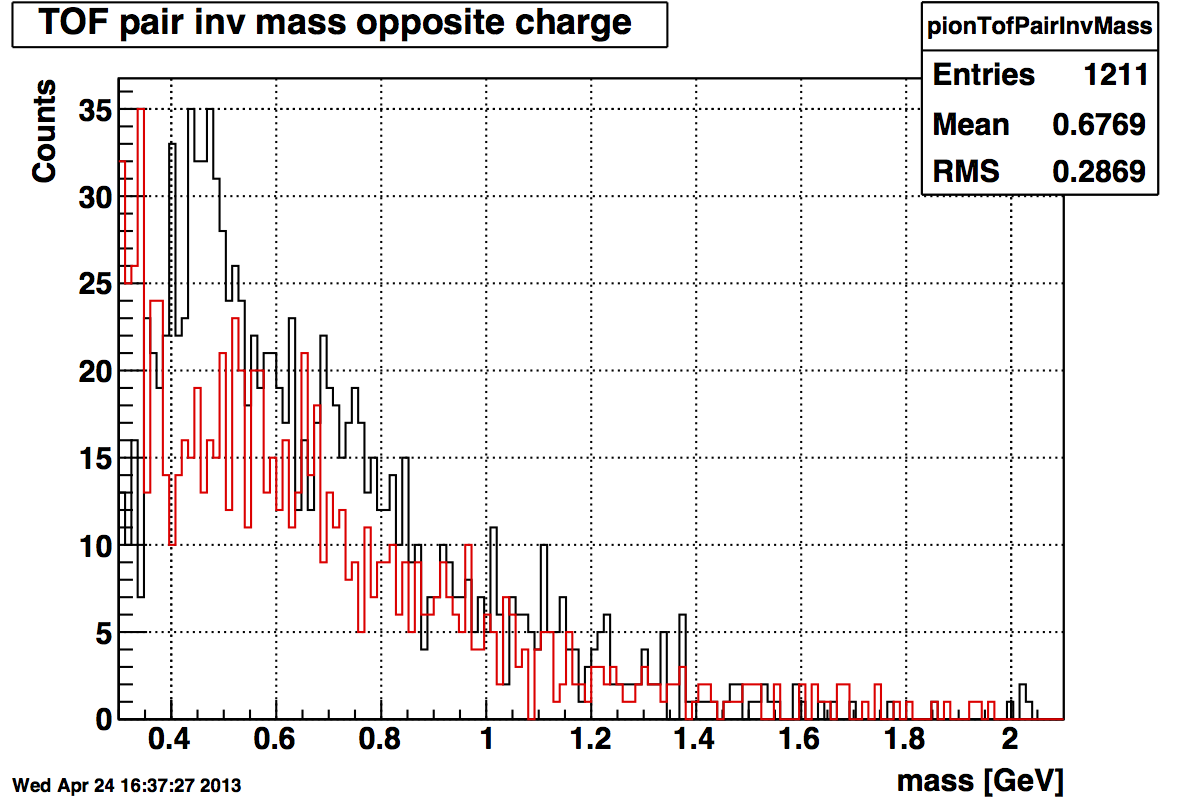Analyzing the run14098038 with an offline TofMult>3 cut
-------------------------- 25-APR-2013 --------------------------------------
The events selected by StPeCMaker have been re-analyzed and this time we focused on the TOF tracks. By doing that we clean up the invariant mass distributions from all entries with pairs formed with TPC tracks.
The new invariant mass distribution is filled with events that have two TOF tracks with opposite charge (no PID yet, but most of the particles are pions):

Once we subtract the background (equal sign charges) we get:

===========================================================================================
===========================================================================================
The analysis of the 1 million events collected in run 14098038 has been going a bit slowly, we have processed ~50 out of the ~134 files in the set.
The figure below shows the correlation between the TOF hit multiplicity seen by the trigger versus the number of tracks that match a TOF hit.

Only 0.8% of the events with 2 TOF hits in trigger have two or more tracks that match a TOF hit.
The same fraction grows to 4.5% for events with 3 TOF hits in trigger.
Events with 4 TOF hits in trigger have that fraction equal to 11%
For higher TOF hit multiplicity that fraction continues to grow.
Raising the TOF hit threshold from 1 to 3 reduces the data sample to 10% of the original. We should then argue for a change in our trigger to have: 3<TofHit<=8
Once the MuDst are produced, we read them with the UPC StPeCMaker which was modified to select events with more than 1 TOF track and less than 6 TOF tracks (instead of the default 6 primary tracks from each vertex)
When a vertex in an event is selected for further analysis, the code makes pairs of all TPC tracks originating from it. The figure below was obtained with the first 41K events available.

The resulting pairs are then written to UPC output trees. On a third pass, we read the output tree and reject all pairs execpt the ones which have at least one track connected to a TOF hit. We demand that
the dEdx deposited by the tracks be consistent with them being pions (3 sigma cut) and calculate their invariant mass. The figure below shows the resulting distribution for tracks of opposite charge (black histogram), as well the one constructed with paris of equal charge, shown as red histogram.
.png)
This figure was updated this morning after the total number of events reached 52k.
Assuming that the background is well reproduced by the same charge pairs we subtract it from the opposote charge signal and rebin it. The result is show below: Updated 24APR with 84K processed events)
.png)
For this small sample of selected events the only decently solid feature appears to be the rho mesons.
The following figures show the transverse momentum of the pion pair for the signal (black) and background (red). The pair making algorithm appears to pair the same track with itself.


- ramdebbe's blog
- Login or register to post comments
